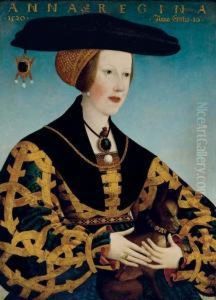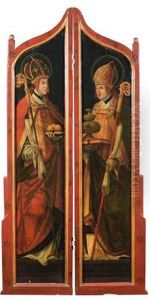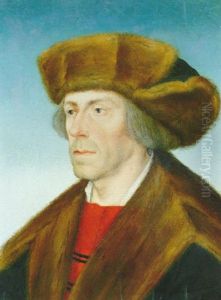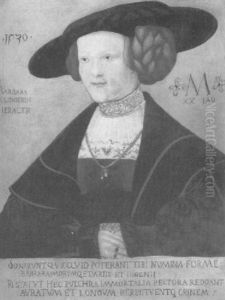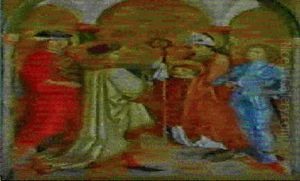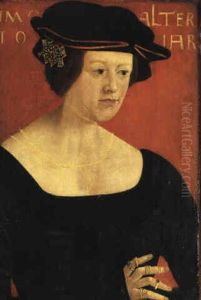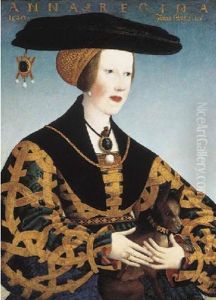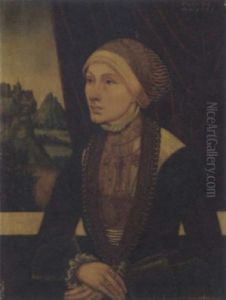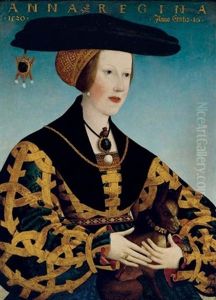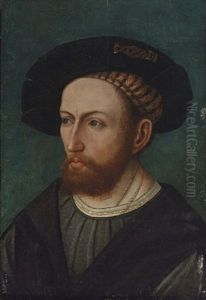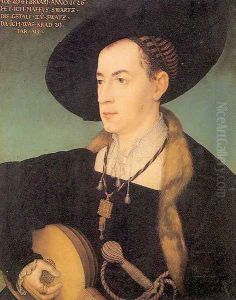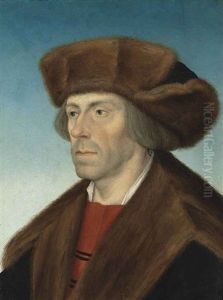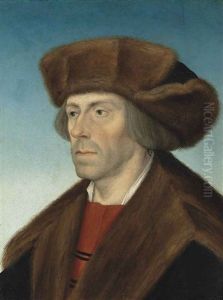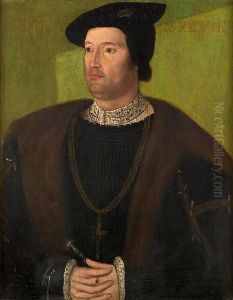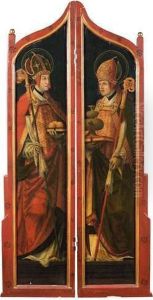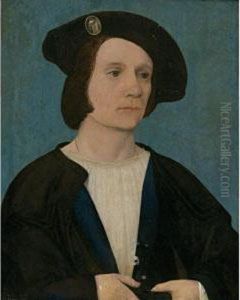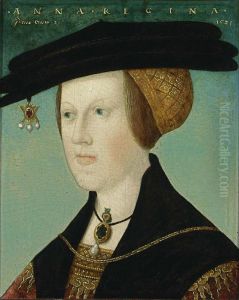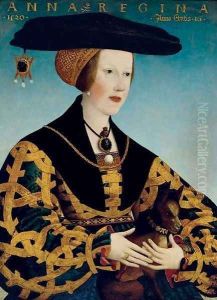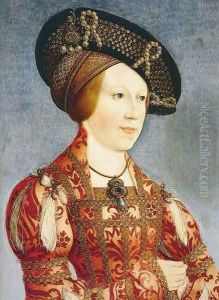Hans Maler Paintings
Hans Maler zu Schwaz, often known simply as Hans Maler, was a German portrait painter who was active during the early 16th century in the Tyrolean region, which is now part of modern Austria. Although not as widely known as some of his contemporaries, Maler was an important artist of the Northern Renaissance, particularly noted for his portrait work.
Maler was born around 1480/1481, likely in Ulm, a city in what is now the state of Baden-Württemberg, Germany. Little is known about his early life, training, or the development of his artistic style. His surname 'zu Schwaz' indicates a connection to the town of Schwaz in Tyrol, which was a significant mining center during the 15th and 16th centuries, suggesting that he may have found patronage among the wealthy mine owners and merchants in the area.
Hans Maler's artistic career is largely defined by his portraits, which are characterized by their detailed representation of the sitters, meticulous attention to the textures of clothing and adornments, and the use of a cool, restrained color palette. His portraits often feature a landscape or architectural background, and he was skilled at capturing the social status and personality of his subjects through their posture and expression.
One of his most famous works is the portrait of the German banker and merchant Jakob Fugger, known as 'Jakob Fugger the Rich', which showcases Maler's ability to depict the power and influence of his sitter with subtlety and finesse. Maler's work reflects the humanist interests of the time, focusing on the individual and the secular rather than the religious narratives that had dominated earlier periods of art.
Maler's exact date of death is uncertain, with estimates ranging from 1526 to 1529. The legacy of his work lies in the detailed portrayal of the society in which he lived and worked. His portraits provide a window into the world of the Northern Renaissance, particularly within the context of the economically thriving region of Tyrol. Despite the lack of extensive documentation on his life and the relatively small number of surviving works confidently attributed to him, Hans Maler zu Schwaz remains a significant figure in the history of German Renaissance art.
